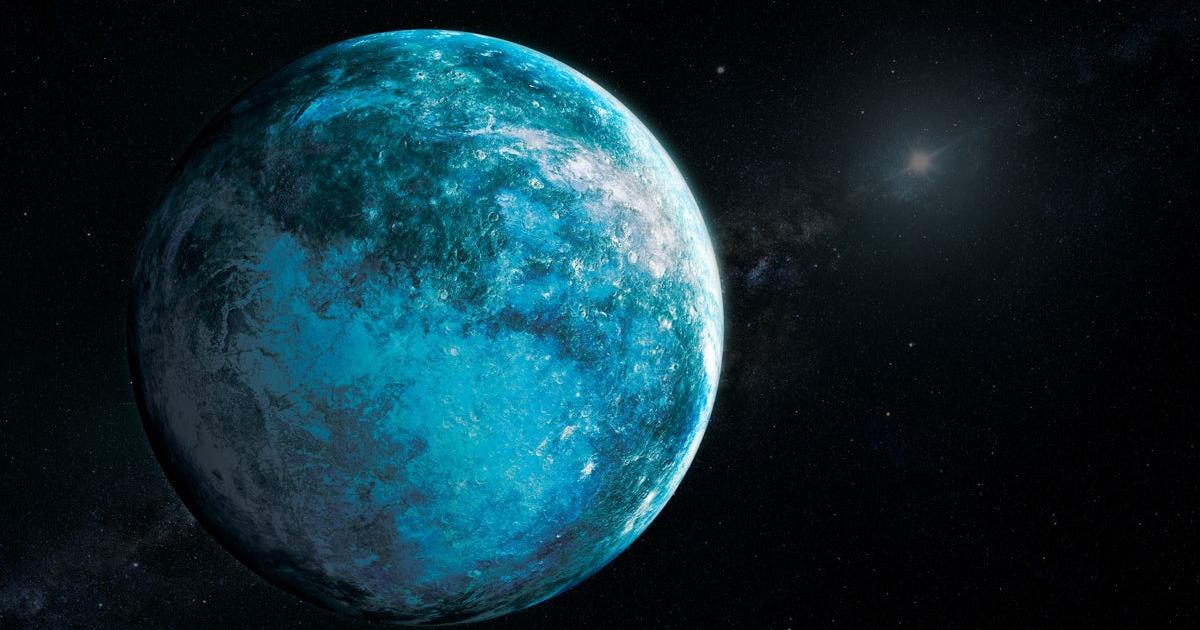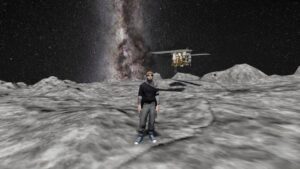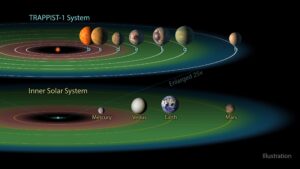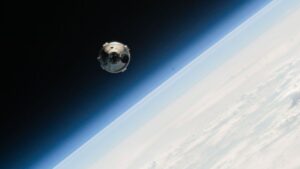Skip to content
Beyond Neptune are some fascinating bodies left over from the formation of our Solar System. Could one of them really be spectacular?
This image shows an illustration of the hypothetical Planet Nine: a planet theorized to be more massive than Earth but hundreds of times farther from the Sun than our world.
Key findings
-
It’s been roughly 10 years since astronomers noticed some strange behavior in some of the outer Solar System objects that seemed to point to a large, gravitational mass very far away: a possible Planet Nine.
-
Since then, much more data has been collected and many searches have been conducted, directly and indirectly, for evidence that would support or disprove the existence of Planet Nine.
-
Today, although several prominent astronomers still dispute its existence, the full Kuiper Belt data set (and beyond) no longer requires Planet Nine. Meanwhile, searches are complicated by a new addition: megaconstellations of satellites. Listen and learn more.
One of the most quickly forgotten revolutions in all of science is our understanding of the Solar System beyond Neptune. Although Pluto was discovered almost a century ago, it wasn’t until the early 1990s that we discovered the next object beyond Neptune that was also not part of the Plutonian system. Yet in the 30 short years since then, we’ve learned a great deal more about the structure of the Kuiper Belt and beyond, but we’ve also faced enormous challenges in our quest to learn more thanks to an unwelcome intruder: the rise of satellite megaconstellations.
Although the original team of Mike Brown and Konstantin Batygin continue to argue for a new, massive, undiscovered world located hundreds of times the Earth-Sun distance, they are largely on their own as other scientists weigh in and see no evidence for this hypothetical world. However, more science needs to be done to know for sure, and in the meantime, the rise of satellite megaconstellations like Starlink now pose an existential threat to all endeavors, including planetary astronomy.
Here, to take us through the current state of the search for the ninth planet, as well as the new obstacles astronomers are grappling with, I am very pleased to welcome Prof. Sam Lawler to the show. Sam is a professor at the University of Regina in Saskatchewan, Canada, and is also known for her advocacy work in favor of dark and quiet skies for all humanity to enjoy and benefit from. It’s a fascinating discussion that took me to some unexpected places, and I think you’ll really enjoy it!
We usually think of dark matter as the “glue” that holds galaxies and larger structures together. But it is much more than that.
The center of the galaxy contains not only stars and a black hole, but also a vast array of gas-rich and dusty elements. Discover more!
Galaxies don’t just power their central supermassive black holes, but the activity generated inside affects the entire galaxy and beyond.
As planets with too many volatiles and too little mass orbit their parent stars, their atmospheres photoevaporate, which spells doom for some.
Here in the 21st century, quantum computing is quickly turning from a dream to a reality. But what is advertising and what is actually true?
To know how to protect its astronauts, NASA must first understand the threat.



